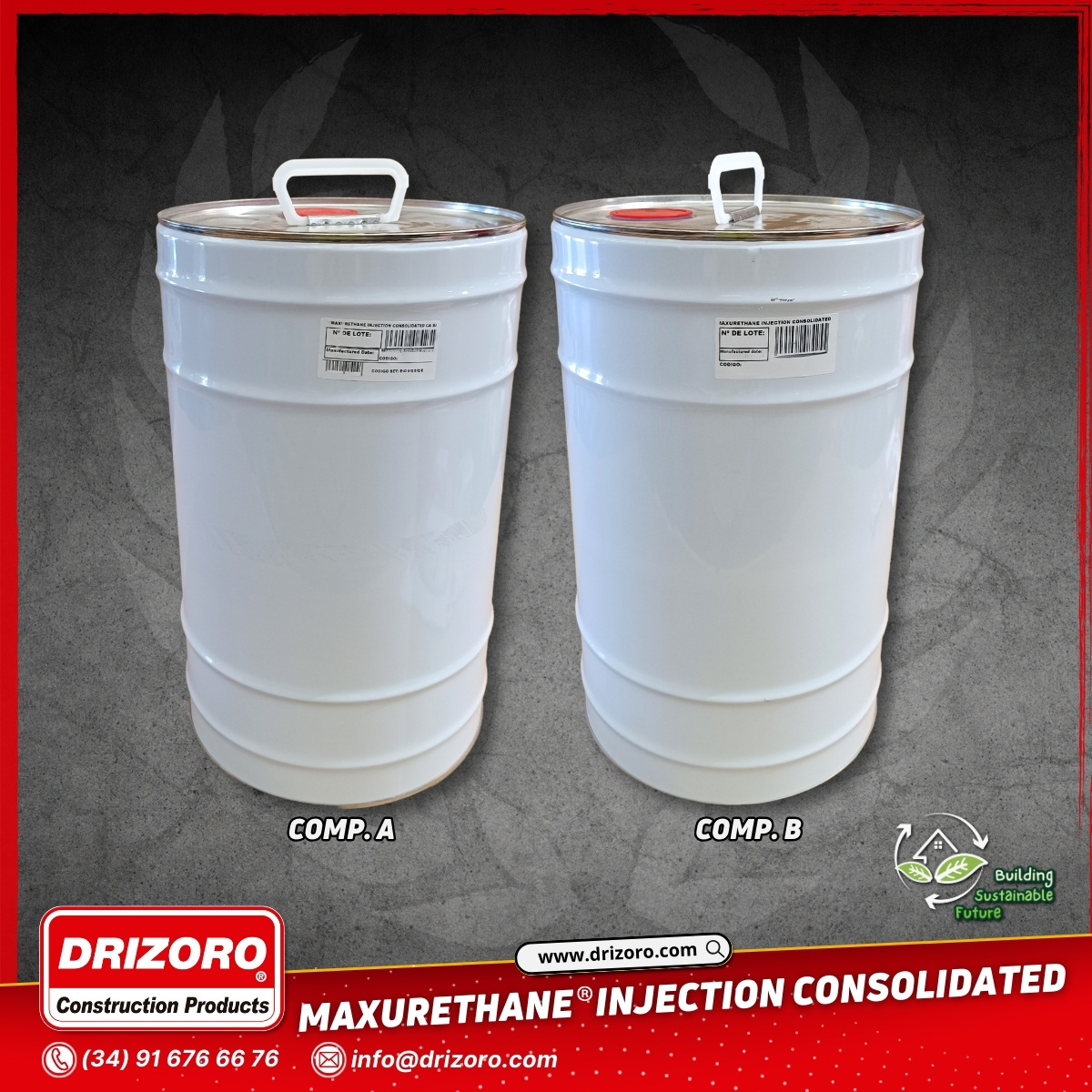MAXURETHANE INJECTION CONSOLIDATED
MAXURETHANE INJECTION CONSOLIDATED is a two-component, high-strength, solvent-free polyurethane resin applied by injection, forming a rigid gel with very high compressive strength for structural injection of concrete cracks, active water leak sealing and soil stabilization.
Thanks to its innovative formulation, MAXURETHANE INJECTION CONSOLIDATED offers excellent dimensional stability, even in wet or dry environments, without shrinking or swelling. It provides outstanding chemical resistance against ground salts, chlorides, sulphates, nitrates, seawater and wastewater. Easy to inject, compatible with mono- and two-component injection systems, and solvent-free, MAXURETHANE INJECTION CONSOLIDATED ensures a reliable, long-lasting solution for complex waterproofing and stabilization challenges.
Applications
- Structural injection of dry or wet cracks, joints and cavities in concrete structures, wastewater treatment plants, dams, and general hydraulic works.
- Soil stabilization on slopes, railway lines, roads, and near aquifer areas to reinforce and prevent collapses.
- Filling voids beneath slabs, tunnels, basements, galleries, metro systems, and underground car parks.
Advantages
- Forms a high-strength rigid gel, even stronger than concrete.
- No shrinkage or swelling under wet or dry conditions.
- Water contact produces waterproof foam with slight expansion.
- Very good chemical resistance to aggressive agents.
- Solvent-free, non-flammable, and easy to inject.
Mode of Application
Mix component A and B in the specified ratio using a low-speed mixer. Inject using one- or two-component equipment directly into cracks, joints or soil requiring consolidation.
Consumption
Approximate consumption is 1.1 kg of product per 1 liter of cavity or void to be filled, depending on site conditions.
Presentation
Supplied in pre-weighted two-component sets of 44 kg (25 kg Component A + 19 kg Component B) and 8.8 kg sets (5 kg Component A + 3.8 kg Component B).
Precautions and Safety
Use protective gloves, safety goggles, and suitable clothing during mixing and injection. Ensure good ventilation and avoid any premature contact with water.






